Understanding Home Insurance Exclusions: What Isn’t Covered?
Home insurance serves as a safety net, providing peace of mind against unexpected damages or losses. However, understanding the fine print of your policy is crucial to avoid surprises when making a claim. While home insurance typically offers a wide range coverage, there are some common exclusions that policyholders should be aware of to ensure adequate protection for their property.
1. Wear and Tear
Home insurance typically excludes damage caused by gradual wear and tear. This includes aging-related issues like rusty pipes, deteriorating roofs, or appliances breaking down due to regular use. Maintenance-related expenses are generally the homeowner’s responsibility.
2. Unoccupied Homes
Homes left unoccupied for extended periods—often 30 days or more—might not be covered for certain risks like theft, vandalism, or water damage. Insurers consider unoccupied homes at higher risk due to reduced oversight and increased vulnerability to such perils.
3. Pre-existing conditions or damage
It may sound obvious, but you can’t use insurance to claim for damage that occurred before you took out the policy. While insurers should aim to treat you fairly and generally give the benefit of the doubt, they have a duty to validate claims where there are concerns about whether you already knew about the issue when you bought the policy.
4. Business Use or Short-Term Rentals
If you’re using your home for business purposes or renting it out frequently, standard home insurance might not cover related damages (or be able to cover you at all!). Insurance designed for rental properties or business use might be necessary to ensure adequate protection.
5. High-Value Items
While home insurance covers personal belongings, there might be limits on the coverage for high-value items like jewellery, artwork, or collectibles. Additional coverage may be required for these valuable possessions or, more commonly, you’ll need to specify these items and their value on your policy in order for them to be covered.
6. Negligence and Intentional Acts
Damages resulting from negligence or intentional acts by the homeowner may not be covered. This includes failure to maintain the property adequately or intentional harm caused to the house by the homeowner.
7. Excluded Structures
Structures not directly connected to the main house, such as detached garages, fences, or sheds, might have limited or no coverage under standard home insurance. If in doubt, check with your insurer to see what cover you have for your outbuildings.
8. War or Nuclear Hazards
Typically, damages resulting from war-related incidents or nuclear hazards are excluded from standard home insurance policies. Specialized insurance might be required for protection against such catastrophic events.
Reading your policy thoroughly and understanding its limitations is vital. While these exclusions are common, the specifics can vary between insurance providers and policies. It’s crucial to communicate with your insurance agent to clarify any doubts and explore additional coverage options based on your specific needs.
While home insurance provides essential protection, it’s equally essential to recognize its limitations. Understanding what your policy covers—and what it doesn’t—is fundamental to ensuring adequate protection for your home and belongings. Assess your risks, review your policy regularly, and consider additional coverage when necessary to safeguard against unforeseen circumstances.
Remember, transparency and clarity in communication with your insurance provider are key to mitigating any surprises during a claim. Stay informed, stay protected!



